Entries Tagged 'Family stories' ↓
November 14th, 2009 — Family stories, Mauritius
Last Wednesday I was invited by the current President to attend the 45th year luncheon celebration of the Rotary club of Port Louis which was the founding club of Rotary in Mauritius.  It is now almost five years since I left the club because of my health condition. I walked back to the club and I felt as if I had never left: I found the same welcoming atmosphere & fellowship from my Rotarian friends. Admittedly the regular weekly luncheons, the monthly firesides, and frequent team working on projects for the club has throughout the years build a fantastic bonding to the club and the members.
Claude Obeegadoo a founder member of the club still active in the club gave a brief account of the forming of the institution 45 years ago. As a matter of fact the club was created more than 45 years ago. The club was chartered on the 10th November 1964 but had been running some time before. Most of the founding members were already in the spirit of the Rotary whilst they are united prior to the independence of the country under the Stella Clavisque club with the motto of Service to the Community and they were influential leaders who had experienced social work during the dramatic cyclones Alix & Carol which destroyed the country in 1960.
The story of Claude Obeegadoo brought back to me the memories of my youth and the dedication of my father who was also involved in social service. I was part of ‘les compagnons batisseurs’ organisation put up under the leadership of Edwin de Robillard to help the homeless victims of the 1960 cyclones. I do recall helping my father who was involved in the fund rising banquets organised by the Stella Clavisque clubs. Under the aegis of the Rotary our Music group of the time was often asked to perform for the handicapped and Polio victims at the Hospice Père Laval and the Tamarin Cheshire home.  The names mentioned at the luncheon as founder members were indeed very good friends of my father. Some of them dinned at home when the club held the firesides.
For record purposes I have kept a note that Andre Robert who until a few years back attended the weekly luncheon at age over 90. Andre Robert since passed away. He wrote on the founding of the club.
When Rotary International entrusted me with the task of establishing a Rotary Club in Curepipe, my primary concern was to avoid repeating the mistake which had been committed in the earlier establishment of the Rotary Club of Port Louis and which had been the failure to preserve club records.
This omission has resulted in the loss of useful information on the beginnings of the Club which would have been of great assistance to future generations. Thus, Curepipe Rotary Club has kept records of its first meetings which will provide a useful account of its first steps within this vast organisation.
In early 1964, my friend Louis Espitalier Noel (Bouzic) who had just returned from a trip to Europe came to see me in my office in Port Louis in order to discuss his plans for setting up a Rotary Club in Mauritius. At that time I did not have the slightest idea about Rotary. To me Rotary was a club for dominoes players.
Indeed, I had read in those days in the local newspapers advertisements concerning dominoes tournaments organised by a club in Port Louis named the Rotary Club. That was all I knew about Rotary. Bouzic, who had attended several authentic Rotary Club meetings in Europe and in Madagascar and who have had useful discussions with Messrs Le Goff and Paul Giraud, told me about the aims and ideas of Rotary. I was immediately attracted to Rotary ideals and I accepted without hesitation to join Bouzic and other friends interested in setting up a club in Mauritius. Bouzic also told me that several unsuccessful attempts had been made in the past. We enlisted the support of those who had been involved in earlier attempts and we set forward resolutely.
The first meetings were held in early 1964 at Bouzic’s house in Floreal. We received much help and support from Monsieur Le Goff, Allan Bates who was a Past President of Cyprus Rotary Club and former Manager of the Development Bank of Mauritius, Paul Giraud, Annauth Beejadhur, José Poncini, Amédée Maingard de la Ville-es Offrans and Bouzic. Once the activity had taken shape and we could count on the sponsorship of the Rotary Club of Tananarive, of which Monsieur Le Goff was a member, we started holding regular meetings like a functional club. We had alternate weekly lunch meetings at the former Flore Mauricienne in Sir William Newton Street, Port Louis and drinks meetings in the evening in the loft of the Park Hotel, in Curepipe. We also organised “Ladies Nights” in the loft of the Park Hotel.
We started on a probationary basis on 1st June 1964 and our regular weekly meetings to go back to that date. We encountered some problems with our recognition by Rotary International. These were mostly due to geographical considerations. Rotary International failed to understand why our club, the Port Louis Rotary Club was named after a District of Mauritius, when in fact most of its members lived in the high parts of the island, in Plaines Wilhems and Moka Districts. We submitted detailed explanations and maps to Rotary International, saying that although most of our members lived in Plaines Wilhems and Moka districts, at distances varying between 6 and 16 miles from Port Louis, in fact our members’ business activities were in Port Louis. After our explanations had failed to convince the Board of Rotary International, we decided to include the whole island within the territorial limits of the Rotary Club of Port Louis, in order to avoid any confusion and further delay in our recognition.
On 10th November I964 we received our formal recognition by a cable addressed to José‚ Poncini.
In the meantime we had constituted our first Board of Directors with Annauth Beejadhur as President, Allan Bates as Vice-president and myself, André Robert as second Vice-president. Our Secretary was José Poncini and our Treasurer, Maxime Seriès. The other Board members were K. Sunassee, Ebrahim Dawood, Amédée Maingard de la Ville-es-Offrans and Louis Espitalier Noël who was also our Sergeant-at-arms. Fritz Kux was the Attendance Officer when Maxime Seriès was abroad, K. Sunassee stood in as Treasurer. Our charter was officially handed to us by District Governor, John Longman, at a banquet held at the former Vatel which was situated on the present location of the Continental Hotel.
All the members of Port Louis Rotary Club attended this banquet. The guests were Mr. Tom Vickers, the official in charge of the Government of Mauritius, Prime Minister, Sir Sewoosagur Ramgoolam, Ministers of the first coalition Government, The Bishops of Port Louis and Mauritius, Monsieur Le Goff, our sponsor and members of Saint Denis, Réunion Rotary Club. Grace was said by Monseigneur Daniel Liston, Bishop of Port Louis. Speeches were made by Annauth Beejadhur, our President, District Governor, John Longman, Prime Minister, Sir Seewoosagur Ramgoolam, top Government official, Tom Vickers (himself a former Rotarian) and Monsieur Le Goff.
The same Board stayed in office following the official receipt of the Club charter. The following 3 committees were created: Club Service, Community Service (of which I was a member) and International Service. We did not form a Vocational Service Committee because we were unsure of its purpose and also because of a lack of members to serve on it. We preferred to concentrate our efforts on a limited number of committees. Like our fellow members of St. Denis Rotary Club, we were independent and did not wish our club to join District 220.
I was appointed President of Port Louis Rotary Club for its second year starting on 1st July 1965. I was attending a Conference on legal studies in St. Denis, Réunion. My friend and lawyer colleague, Dominique Sauger, was at that time President of St. Denis Rotary Club. My friend Dominique and myself received for the occasion a very warm and enthusiastic reception from St. Denis Rotary Club.
Upon my return to Mauritius, I started my term of office as President with the same Board members as for the previous year. At first we found it difficult to select a project. We had several projects in mind during my Presidency. One of them was “Alcoholic Anonymous”. The idea was that Dr. Raman would train for a period of 6 months a medical officer selected from his staff at Brown Sequard Hospital. The Club would than temporarily take over and would pay the medical officer’s salary. If the project had been successful, the Government would have been asked to take it over. Another project was that every Rotarian would look after an elderly or disabled person. We also considered asking Rotarians to employ first offenders, ex prisoners with a view to their rehabilitation upon the recommendation of the Commissioner of Prison. Unfortunately these projects, which were rather ambitious for a new club, were not carried out successfully.
Subsequently we bought musical instruments for the paralysed people of Tamarin Cheshire Home and we also paid for a music teacher to give them lessons.
As far as I can recall the list of founder members of Port Louis Rotary Club is as follows:
- Philippe Lenoir ( Beverages – Alcoholic (Wine Distributing)
- Pierre Hugnin ( Beverages – Non-alcoholic (Carbonated Beverage Manufacturing)
- Bhopal Beeharry Panray ( Business Service (Patent and Trade Marks)
- Clément Dalais ( Construction Service (Building Construction)
- Fritz Kux ( Construction Service (General Contracting)
- K. Sunassee ( Dry Goods and General Merchandise- Drapery (Variety Stores)
- Claude Obeegadoo ( Education (Private School)
- Archibald Archibald Engineering (Civil Engineering)
- Allan Bates ( Finance (Development Banking)
- Ebrahim Dawood ( Food Industry (Food and Grain)
- Maxime Seriès (Fruit, Vegetables and Nut Products (Fruit and Vegetable Importing and Distribution)
- Marcel Lagesse Glass Industry (Mirror Manufacturing)
- James 0. Greig Government (Taxation)
- H.R. Hurd ( Government (Taxation)
- Commander Lavender Government (Public Defence – Sea)
- John Schoon-Wagen Government (Tourist Promotion)
- José Poncini Horology (Watch Servicing and Retailing).
- Michel Pitot Hotels and Restaurants (Hotels)
- Philippe Lim ( Hotels and Restaurants (Restaurants)
- André Robert ( Law (Solicitor)
- Henry Latham-Koenig ( Law (Notary Public) )
- Fernand Espitalier-Noël ( Medicine (Surgeon) )
- Abdool Raman ( Medecine (Psychiatrist) )
- Annauth Beejadhur ( Printing and Publishing (Newspaper Publishing)
- Radhamohun Gujadhur ( Real Estate (Land Development)
- Carrim Currimjee ( Real Estate (Renting-Proprietary)
- Robert Antoine ( Sugar Industry (Sugar Research)
- Philip Scott ( Sugar Industry (Sugar Milling)
- G.P.N. Weller ( Tobacco Industry (Cigarette Manufacture)
- Amédée Maingard de la Ville-es-Offrans ( Transportation (Air Transportation)
- Louis Espitalier-Noël ( Transportation (Travel Agency)
The following members inducted in early May 1965 were the first members admitted to Port Louis Rotary Club following the receipt of its charter:
- Robert Antelme ( Laundry, Cleaning and Dyeing (Laundries)
- Pierre Desmarais ( Architecture )
- Redmond Hart de Keating ( Law – Notary (He replaced Henry Latham-Koenig who had resigned)
- Edward Bathfield ( Shoe Manufacture)
- Alain Raffray ( Banking – Commercial)
- Leslie Mayhew ( Life Assurance)
- Grewal (Lumber)
Other members admitted upon the opening of their classification round about June or July I965 were:
- Docteur B. Jowry ( Dentistry)
- Hamid Moollan ( Law (Barrister-at-Law)
- L. France Yip Tong ( Refrigeration)
- R. Seeyave ( Refrigeration )
During my Presidency, I received on 19th and 20th September I965, Kendall Young from the Eastern Hemisphere District Governor Service. I learnt much from him. He encouraged me to try my best to have the club included into District 220. I remember that accompanying him at about I p.m. to the Park Hotel. Upon his arrival by plane in Mauritius after an exhausting day in St. Denis, I offered him a drink which he refused. I then offered him tea or coffee which he also refused. He then told me he was a Mormon and , as such, never drank any alcoholic or stimulating beverages. He then told me that he would like to have a bath. Unfortunately not a drop of water was running from the taps at this late hour, although it was raining abundantly outside. He seemed very disappointed.
I also received Anant Pandya who was then Governor of District 220. He also pressed our club to join District 220. In spite of the explanations of my friend Anant Pandya and the assistance given by Allan Bates and myself, Club members still hesitated and did not want to commit themselves. We wanted in fact to follow St. Denis Club which had remained independent. It was only after the visit of Rotary International President, Luther Hodges, in January 1968, that Port Louis and St. Denis Rotary Clubs decided to join District 220.
Our monthly bulletin first appeared in January 1965. Archibald Archibald (Archi) was responsible for its publication. I have kept some of the early issues of our bulletin. I think that I have given you an outline of our beginnings in this noble organisation: Rotary International. I leave to other founding members the task of completing the picture and of giving you an account of the Club’s more recent achievements.
ANDRÉ ROBERT
October 24th, 2009 — Caritas, Environment, Family stories, Mauritius
C’est avec un regret que j’ai manqué d’assister  aujourd’hui une rencontre et débat organisé par l’association de cadres chrétiens sur l’encyclique ‘Caritas in veritate’ de notre présent Pape Benoit XVI.
L’encyclique Caritas in veritate – L’amour dans la vérité – souligne fortement que le renouveau authentique de l’homme et de la société repose uniquement sur le Christ, qui nous transforme et nous rend capables d’agir dans la vérité et l’amour. C’est la base de tout développement humain intégral et authentique ; force dynamique qui suppose, certes, la justice et, en même temps, la complète par la gratuité du don et du pardon.
L’encyclique ne propose pas des solutions techniques, mais demande que soient respectés certains principes essentiels pour construire un véritable développement humain.
Elle invite aussi à entreprendre une réflexion approfondie sur le sens de l’économie et sur ses finalités, qui doit retrouver et faire sienne la logique du don. Cela demande la collaboration de tous, à tous les niveaux de responsabilité individuelle, sociale et politique, et présuppose une formation des consciences qui donne force aux critères moraux dans l’élaboration des projets politiques et économiques.
Introduction
1.     L’amour dans la vérité est la force dynamique essentielle du vrai développement de chaque personne et de l’humanité tout entière
a.     L’amour pousse les personnes à s’engager dans le domaine de la justice et de la paix
b.     L’amour a son origine en Dieu, Amour éternel et Vérité absolue
c.     Dieu a un projet pour chaque personne ; dans lequel elle y trouve sa propre vérité et son bien
d.     L’élan pour aimer de manière authentique est une vocation déposée par Dieu dans le cœur et l’esprit de chaque homme
e.     Jésus Christ purifie et libère l’homme dans la recherche de l’amour et de la vérité (révélation)
En 6 chapitres de son encyclique, Le Saint Père nous remet dans la lumière d’aujourd’hui  la doctrine sociale de l’Eglise du Pape Paul VI et le développement humain qui se doit multipolaire. ‘La richesse mondiale croît en terme absolu mais les inégalités augmentent’. Au chapitre III traitant de Fraternité, Développent économique et Société civile, le pape insiste sur la gratuité du Don. La solidarité universelle est un fait et aussi un devoir est un thème développé au chapitre IV.  La collaboration grande famille humaine et le développement des peuples et la technique  sont couverts sous les chapitres V et VI. Le Pape dans sa conclusion, insiste qu’un ‘humanisme qui exclut Dieu et un humanisme inhumain’.
Le texte complet de l’encyclique peut être lu sur le site du Diocèse de Port-Louis.
October 23rd, 2009 — Family stories, Reflexion
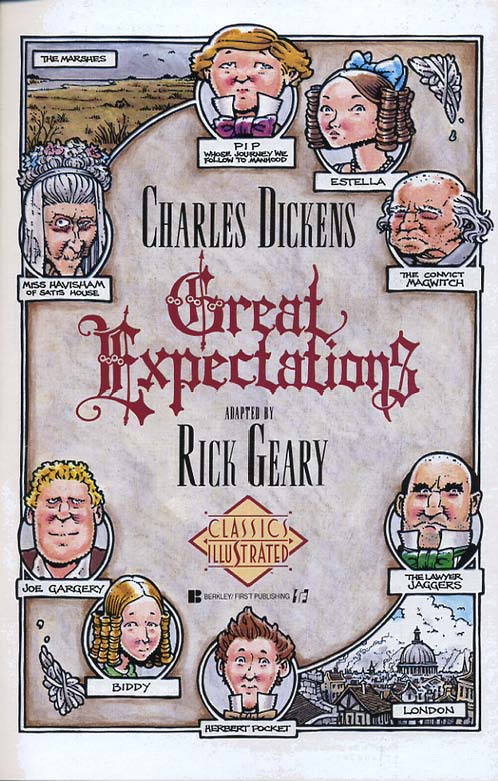
I am so pleased to relive my teenage period, as I have received today a couple of illustrated classics which I was fond to read during the days I attended St. Mary’s college. The form has changed, as I am not reading the document in hard copy from the library in the early sixty’s whilst the content is still the same.
I owe much to these illustrated Classics which have enhanced my reading skills and provided me with much culture in a fun way. There was no way for a young boy of 12 to read Charles Dickens in the original old English version ,yet I then got a taste of great literature through the Illustrated Classics series.
Time has changed. There were no Manga’s in those days. I would encourage the youth of today to read these Classics which are still available in Comics strips forms and on a mobile telephone or any nomad instruments.
October 16th, 2009 — Family stories, Mauritius, Reflexion
Lors d’un brillant exposé par un expert en goût et Å“nologie, Jean Verget, que j’ai eu l’occasion d’y assister mercredi soir à l’hôtel School Gaëtan Duval, j’ai retenu parmi une mine d’informations nouvelles, un élément simple et important en matière de goût. Simplement je ne peux distinguer avec mes papïlles que quelques saveurs :
· salé comme le sel
· amer comme la quinine
· acide comme le citron
· umamie comme les glutamates
· calcium comme dans le chou
· sucré comme le sucre
Ce qui semble important c’est une harmonie de goût pour rendre l’expérience agréable. Comme chaque individu à son propre instrument gustatif calibré pour soi, l’harmonie ne peut qu’ être personnelle.
Comment faire l’harmonisation ?
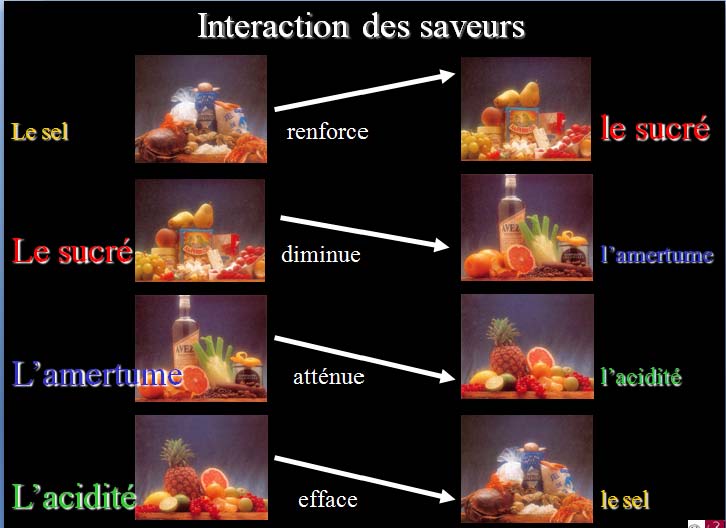 _
_
Qui est Jean Vegert et quel est son parcours en la matière ?
Certificat d’œnologie et de législation viticole
Ecole supérieure de commerce de Montpellier
Certificat d’économie viticole de la fac de droit de Montpellier
Directeur technique de la maison Brocard (vins de bourgogne) de 1966 Ã 1971
Directeur général des Compagnons Gourmets de 1971 à 1977
Directeur générale Président de Laplace, le chemin de la propriété jusqu’a sa retraite.
Conférencier et formateur sur l’œnologie et le goût,
Formation auprès de groupe comme :
Accor, Hilton, Sodexho, Elior, Holiday Inn?.
Conférencier dans des clubs du Rotary et des Lion’s
Formation sur la dégustation, la vue, l’olfaction, le goût, les influences climatiques, l’harmonie des mets et des vins, les régions de production vinicoles?
October 8th, 2009 — Family stories
From Wonderful Lyon where I landed this morning with a high temperature of 20 C I am greeting you.
My last visit to Lyon must have been a couple of years ago. My most memorable visit in Lyon was the time I was still working in the Logistic field and I attended a meeting over a week end with the Cargo partners hosted by Clasquin & company. I discovered the bouchons Lyonnais.
A bouchon is a type of restaurant found in Lyon, France, that serves traditional Lyonnaise cuisine, such as sausages, duck pâté or roast pork. Compared to other forms of French cooking such as nouvelle cuisine, the dishes are quite fatty, and heavily oriented around meat. There are around 20 officially certified traditional bouchons, but a larger number of establishments describing themselves using the term.
Typically, the emphasis in a bouchon is not on haute cuisine, but rather, a convivial atmosphere and a personal relationship with the owner.
The tradition of bouchons came from small inns visited by silk workers passing through Lyon in the seventeenth and eighteenth centuries.

Another bouchon, Le tablier (the apron), in Vieux Lyon.
According to Le petit Robert this name derives from the 16th century expression for a bunch of twisted straw. A representation of such bundles began to appear on signs to indicate restaurants, and by extension the restaurants themselves became known as bouchons. The more common use of “bouchons” as a stopper at the mouth of a bottle, and its derivatives, have a different etymology.
Today
These bouchons are considered “authentic”, as certified by the organisation Les Authentiques Bouchons Lyonnais: Abel, Brunet, Café des deux places, Café des fédérations, Daniel et Denise, Chez Georges le petit bouchon, Les gones, Hugon, Le Jura, Chez Marcelle, Le Mercière, La mère Jean, Le mitonné, Le Morgon, Le musée, Chez Paul, Les Trois Maries, A ma vigne, and Le Vivarais. The list is somewhat subject to fluctuation.
The Petit Damier and Le Connétable on the Rue de l’Arbre Sec should also not be missed.
While many bouchons are now oriented strongly towards the tourist market, with increased prices and less traditional fare as a result, a typical meal in a real bouchon costs around €20.[upda
This visit then I shall have to watch over my meals….
September 10th, 2009 — books, Family stories, Toastmasters
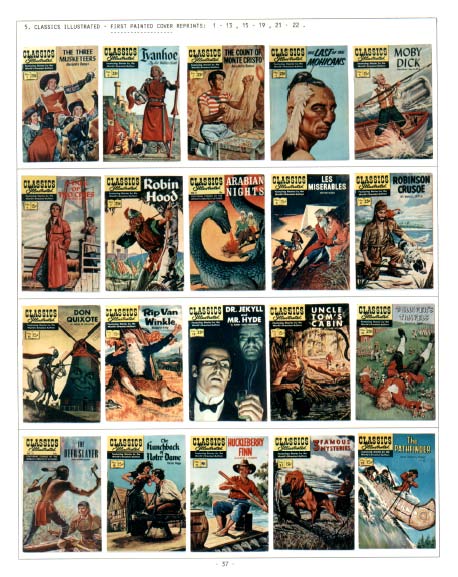
During my secondary schooling period, though I was never a great reader of books, I have to recognise the benefits I derived from reading ‘Illustrated classics’ has contributed very largely to my general knowledge and to my openings to literature. Otherwise, just as many of my friends, we were reading comics of the like of PIPO, Tin Tin, Blek Roc or Pim Pam Poum. Later, I read regularly the ‘Readers Digest’ which was the recommended monthly reading of my English teachers.
I feel that it is a fun way to acquire knowledge and to be initiated to reading for adolescents.
I would love to reread these classics or at least to hold copies of them.
September 2nd, 2009 — Chinois, Entrepreneurship, Family stories, learning
Kishore Mahbubani on discussing the position of China in respect of taking world leadership, seems to think that China for the next decades will not take the lead top seat in the affairs of the globe. He quotes the wisdom of Deng Xiaping and thinks that China has still have much grounds to cover in its internal matters to want to spare its energy to dominate world affairs.
Lessons from Mr. Deng Xiaping, who had a lot of political wisdom for his successors to follow. Much of it is captured in the famous 28 characters that Deng used:
1. Lengjing guancha- observe and analyse (developments) calmly;
2. Chenzhuo yingfu- deal (with changes) patiently and confidently;
3. Wenzbu zhenjiao- secure (our own) position;
4. Taoguang yanghui- conceal (our) capabilities and avoid the limelight;
5. Shanyu shouzhou- be good at keeping a low profile;
6. Juebu dangtou- never become a leader;
7.yousuo zuowei- strive to make achievements.
I fancy very much the lessons from Deng in world politics. They could well apply to each individual in our respective sphere of business. I like this sense of humility, discretion and conscious will to keep a low profile- which is very much a Hakka temperament I would like to believe. I could see my Grandfather using these same words.
Our tainted western education would contradict point 5,- be good at keeping a low profile, as we tend to think that we have to be recognised for our worth. When dealing with Chinese businesses in my dates in the Fareast, I could sense the marked difference between a Cantonese or Shanghainese influenced business where boasting on the past successes and a show of power were more important that striving diligently to make achievements with humility.
I recalled the grand welcome my boss and I had by a Hong Kong firm to start discussing cooperation in the 70’s . We were received in a hired Rolls Royce and transported to a posh hotel and entertained lavishly. It was a show of the prosperity that the said firm was enjoying and the power, influence and capacity they commanded. Two days later, realizing that we were still undecided to sign in on their terms, they flatly terminated the talks and did not even show us how to hail a taxi to get our hotel.
August 27th, 2009 — Entrepreneurship, Family stories, learning
My thoughts, this morning are still digesting the text I read last night from Kishore Mahbubani on the need to be open-minded and pragmatic.On the other hand, I would encourage you to read the life path of Deng Xiaoping from whom we can take lessons.
At the beginning of the twenty first century, as we enter into one of the most intense period of change experienced by humanity, America is abandoning its pragmatist streak when it needs it most. We are moving into very uncertain political and economic terrains. It would be foolish to assume that the western ideological assumptions of the 19th and twentieth century will necessarily work in the twenty first century. It would be wiser to keep an open mind and to challenge every ideological assumption embedded in our minds. Pragmatism is the best guiding spirit we can as we have as we venture into the new century. It is therefore only appropriate to quote once again the greatest pragmatism of the twentieth century, Deng Xiaoping: ‘it does not matter whether a cat is black or white; if it catches mice, it is a good cat.’
I cannot prevent me to flash back to my grandfather with whom I had the great privilege to have been closed to during his retirement years when he took up the projects of looking after the repairs and maintenance of some of the family properties. It was precisely his open-minded thinking and pragmatism that struck me. In his own words he told me: do not be ideological, understand the underlying principles of any theory then apply them in your practice using your good sense. Good thinking is through good questioning and hard work.
How I would have loved to think that these open-mindedness and pragmatism are traits of Hakkas?
August 22nd, 2009 — Family stories, happiness, People, Reflexion
Ce matin, ma grasse matinée au lit, je regardais les dernières informations sur Telematin. Et voila que mon attention était dirigée à un petit documentaire sur Raymond Peynet. A priori le nom de Raymond Peynet ne m’invoqué rien de particulier.
Au fil du reportage, un sentiment de nostalgie m’envahi. Les illustrations et gravures de Raymond Peynet montrées à l’écran me faisait revivre des moments joyeux de ma vie où quarante ans de cela, je me trouvais pour la première fois visitant les quais de Paris.
1968. Je flânais dans Paris et faisais la découverte de cette grande capitale Française, ville de l’amour. Voila, je retrouve les cartes postales que j’avais achetés pour affranchir à mes amis et parents.
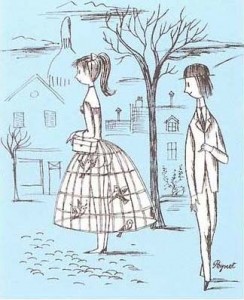
Aujourd’hui quarante ans après, je découvre l’auteur des gravures des ces cartes postales, d’un gout quelque peu coquin et apprend que Raymond Peynet était mondialement connu et qui avait plusieurs musées dissimulés en France, Japon, et Chine pour faire valoir ses œuvres.
Quelque bonheur d’avoir vu beaucoup d’eau passé sous les ponts et de pouvoir revivre les souvenirs.

August 14th, 2009 — Entrepreneurship, Family stories, learning
Today I learnt of the demise of Les Paul at 94. He has left an extraordinary wealth to the world of Music.
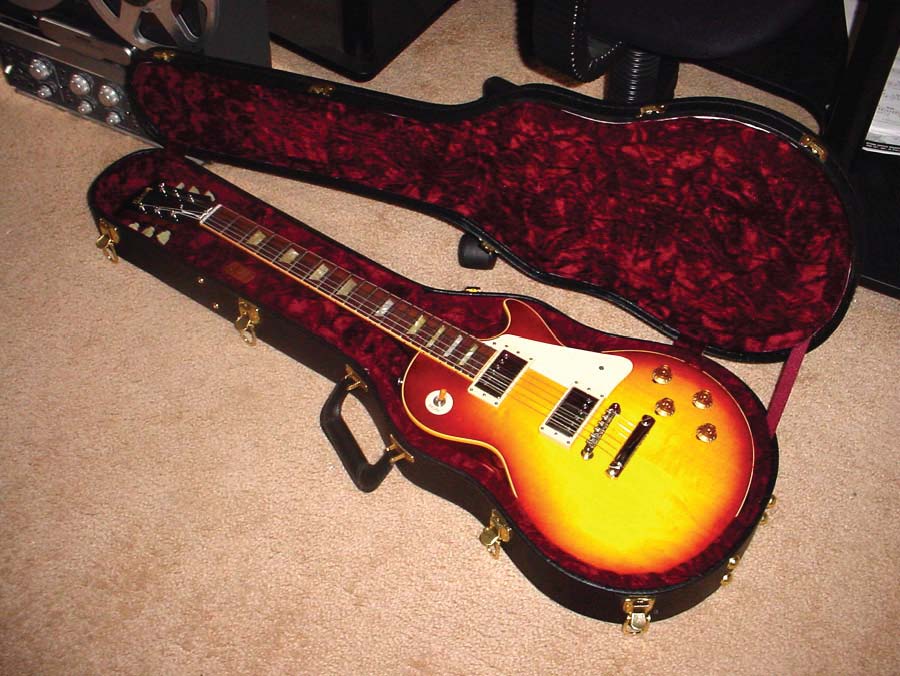
Tinkering with electronics and guitar amplification since his youth, Les Paul began constructing his own electric guitar in the late ’30s. Unhappy with the first generation of commercially available hollowbodies because of their thin tone, lack of sustain, and feedback problems, Paul opted to build an entirely new structure. “I was interested in proving that a vibration-free top was the way to go,” he has said. “I even built a guitar out of a railroad rail to prove it. What I wanted was to amplify pure string vibration, without the resonance of the wood getting involved in the sound.” With the good graces of Epiphone president Epi Stathopoulo, Paul used the Epiphone plant and machinery in 1941 to bring his vision to fruition. He affectionately dubbed the guitar “The Log.”
Les Paul’s tireless experiments sometimes proved to be dangerous, and he nearly electrocuted himself in 1940 during a session in the cellar of his Queens apartment. During the next two years of rehabilitation, Les earned his living producing radio music. Forced to put the Pennsylvanians and the rest of his career on hold, Les Paul moved to Hollywood. During World War II, he was drafted into the Army but permitted to stay in California, where he became a regular player for Armed Forces Radio Service. By 1943 he had assembled a trio that regularly performed live, on the radio, and on V-Discs. In 1944 he entered the jazz spotlight—thanks to his dazzling work filling in for Oscar Moore alongside Nat King Cole, Illinois Jacquet, and other superstars —at the first of the prestigious Jazz at the Philharmonic concerts.
By his mid-thirties, Paul had successfully combined Reinhardt-inspired jazz playing and the western swing and twang of his Rhubarb Red persona into one distinctive, electrifying style. In the Les Paul Trio he translated the dizzying runs and unusual harmonies found on Jazz at the Philharmonic into a slower, subtler, more commercial approach. His novelty instrumentals were tighter, brasher, and punctuated with effects. Overall, the trademark Les Paul sound was razor-sharp, clean-shaven, and divinely smooth.
As small combos eclipsed big bands toward the end of World War II, Les Paul Trio’s popularity grew. They cut records for Decca both alone and behind the likes of Helen Forrest, the Andrews Sisters, the Delta Rhythm Boys, Dick Hayes, and, most notably, Bing Crosby. Since 1945, when the crooner brought them into the studio to back him on a few numbers, the Trio had become regular guests on Crosby’s hit radio show. The highlight of the session was Paul’s first No. 1 hit and million-seller, the gorgeous “It’s Been a Long, Long Time.”
The announcement of his death today made me, relived a fantastic period of my life.
Oh ! my youth, my love of Pop music! My passion for music!
The days with a bunch of friends we got together to play music. The grain of entrepreneurship in me got me to convince my friends, with the help of my father, to start a small band: ‘The Boys’. As the leader of the band it was a learning experience of dealing with a variety of people. Hind sight the germs of leadership skills were starting to sprout.
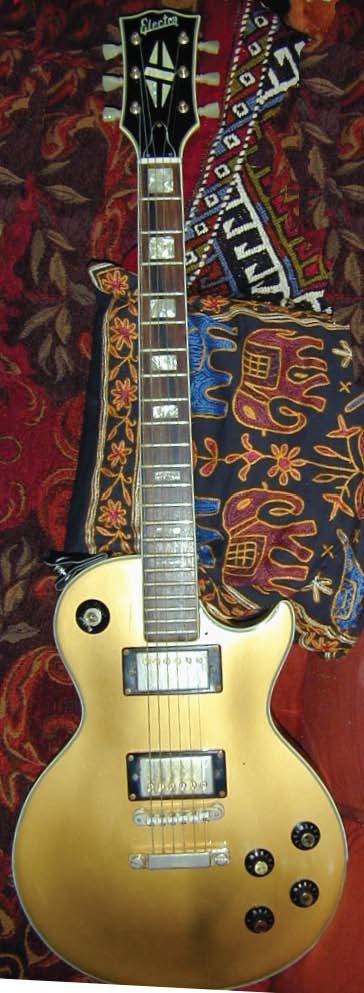
Today I would like to share with you my past passion of the guitar. I was offered a guitar as a birthday present from my parents. It was a black acoustic guitar bought from Venpin store. With my younger brother we took Guitar lessons from Claudio Cassimally who then was a young musician of the Police Band. He was recommended by the Band master Philip Ohsan who was a close friend of my Dad.

Together with another friend who owned a Framus german acoustic Guitar we started practicing together. As our music and dexterity improved, we got more friends with similar interest to join in our jam sessions. The idea of having a band germinated. The days of the all guitar band started to become fashionable with the advent of the ‘SHADOWS’. I convince my Dad to buy us a set of drums and an electric lead Guitar( Egmond) which was driven by an old Radio set to amplify the sound.
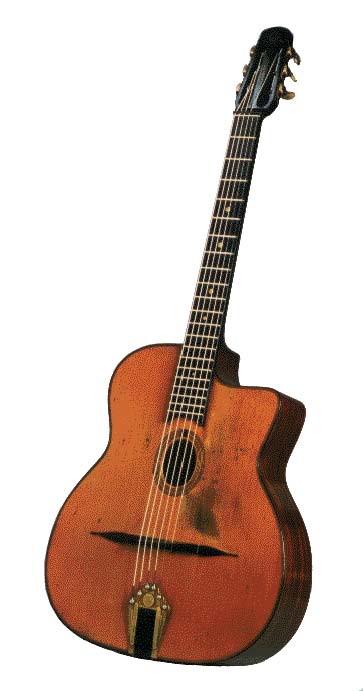
Our friend Dasso joined us with his Tesco Japanese ‘Les Paul’ imitation guitar. I went to shop around for a bass guitar, it was far more that we could afford. Lok Wah another friend whose father was a cabinet maker offered to help us to build a bass guitar from kits we could buy from the music stores. A blue formica electric Bass guitar, (Selmer type) after much work was crafted. Thus we completed our sets of three guitars and drums set. My dream was always to own a VOX, Fender or Gibson sets. It remained a dream…











